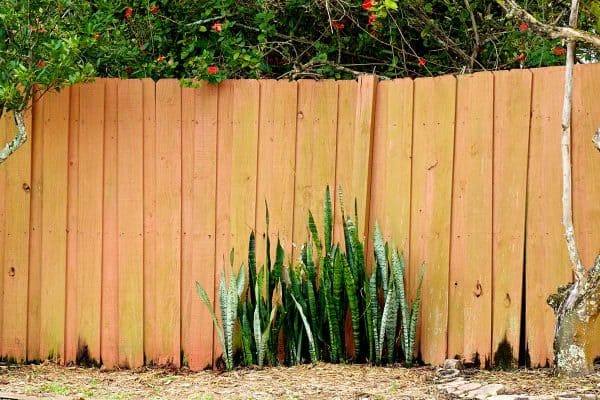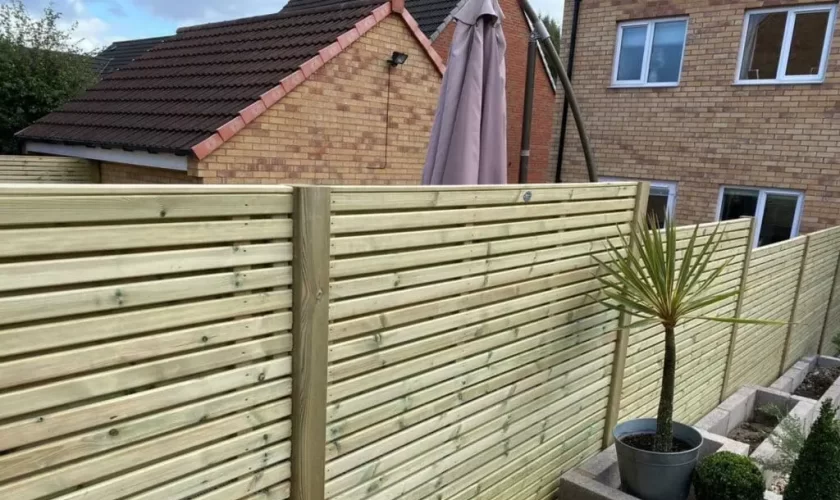A fence is more than just a boundary marker for your property; it’s a statement of style and a crucial aspect of your outdoor space’s overall aesthetic. When considering fencing in Leeds or any part of the beautiful Yorkshire landscape, it’s essential to choose a design that complements the local environment. This guide will take you through the steps to install a fence that not only serves its purpose but also enhances the beauty of your Yorkshire garden.
Understanding Your Yorkshire Landscape
Yorkshire is renowned for its stunning landscapes, from the rolling hills and moors to charming rural villages and bustling cities like Leeds. The architecture and natural scenery of Yorkshire are unique, characterised by stone walls, lush greenery, and traditional homes. When planning your fence installation, it’s vital to consider these elements to ensure your fence blends seamlessly with its surroundings.
Key Features to Consider
- Material Selection: The materials you choose for your fence should reflect the natural materials found in Yorkshire. Think of stone, wood, and iron, which are commonly used in the area. These materials are not only traditional but also durable, capable of withstanding Yorkshire’s weather conditions.
- Design and Style: The style of your fence should match the aesthetic of your home and garden. Whether you live in a modern urban home in Leeds or a quaint cottage in the Dales, there is a fence design that can complement your property.
- Local Regulations: Before installing fencing in Leeds or elsewhere in Yorkshire, check local planning regulations. Some areas, especially in conservation zones, may have restrictions on fence height, materials, and styles.
Step-by-Step Guide to Installing Your Fence
-
Planning Your Fence
The first step to a successful fence installation is careful planning. Start by sketching out a plan of your garden and where you want the fence to go. Consider the following:
- Purpose: Are you installing the fence for privacy, security, or purely decorative reasons? Your purpose will influence the height, style, and material of your fence.
- Budget: Fencing can range significantly in cost depending on the material and design. Set a realistic budget that includes all necessary materials and labour.
- Style: Think about how the fence will fit with the rest of your garden. For a traditional Yorkshire look, a wooden picket fence or stone wall might be ideal. For something more contemporary, consider metal or composite materials.
-
Choosing the Right Materials
Selecting the right material is crucial for ensuring your fence complements the Yorkshire landscape and endures the elements. Here are some popular options:
- Wood: A classic choice for many homeowners in Leeds, wooden fences are versatile and can be painted or stained to match your garden’s colour scheme. Cedar and oak are particularly popular for their durability and aesthetic appeal.
- Stone: Stone walls or fences are a traditional choice that fits perfectly with Yorkshire’s natural landscape. They are incredibly durable and low-maintenance, though they can be more expensive than other options.
- Metal: Wrought iron or aluminium fences offer a more modern look while still being durable. They are an excellent choice for security purposes and can be designed with ornate details to add a touch of elegance.
- Composite: Made from a mixture of wood fibres and plastic, composite fencing is an eco-friendly and durable option. It requires less maintenance than wood and comes in various styles and colours.
-
Measuring and Marking Your Space
Once you’ve decided on the style and material, the next step is to measure your garden and mark where the fence will go. Accurate measurements are crucial for purchasing the right amount of materials and avoiding any issues during installation.

- Tools Needed: Tape measure, stakes, string, and a level.
- Steps:
- Start by measuring the perimeter of the area you want to enclose.
- Mark the corners with stakes and use string to outline the fence line. This will give you a visual guide of where the fence will go.
- Use a level to ensure your lines are straight and even.
-
Preparing the Ground
Before you start installing your fence, it’s essential to prepare the ground. This may involve clearing vegetation, levelling the soil, or digging post holes, depending on the type of fence you’ve chosen.
- Clearing Vegetation: Remove any plants, rocks, or debris from the fence line to create a clear path for installation.
- Levelling the Ground: For a straight and stable fence, ensure the ground is level. This might involve some digging or adding soil to fill in low areas.
- Digging Post Holes: For most fences, you will need to dig holes for the fence posts. The depth and width of these holes will depend on the height and style of your fence. As a general rule, post holes should be one-third the height of the fence above ground.
- Installing Fence Posts
Fence posts are the backbone of your fence, providing support and stability. Proper installation is critical for ensuring your fence is strong and durable.
- Materials Needed: Fence posts, concrete, gravel, post level, and a post hole digger.
- Steps:
- Place a small amount of gravel at the bottom of each post hole for drainage.
- Insert the fence post into the hole and use a post level to ensure it is straight.
- Fill the hole with concrete around the post, making sure it is secure.
- Allow the concrete to set according to the manufacturer’s instructions before attaching the fence panels.
-
Attaching Fence Panels or Boards
Once your posts are securely in place, you can attach the fence panels or boards. The method for this will vary depending on the type of fence you have chosen.
- Tools Needed: Drill, screws, brackets, and a level.
- Steps:
- Start at one end of the fence line and attach the first panel or board to the posts.
- Use a level to ensure each panel or board is straight before securing it in place.
- Continue this process along the fence line, making sure each section is level and secure.
-
Finishing Touches
After all the panels are in place, it’s time to add the finishing touches to your fence. This might include painting or staining wooden fencing, adding decorative elements, or planting hedges or flowers along the fence line to enhance its appearance.
- Painting or Staining: If you’ve chosen a wooden fence, consider painting or staining it to match your garden’s aesthetic. This also helps protect the wood from the elements.
- Adding Decorative Elements: Trellis panels, finials, or post caps can add a decorative touch to your fence, making it a more attractive feature in your garden.
- Planting: Planting hedges, flowers, or climbing plants along your fence can help it blend into the landscape and add a touch of natural beauty.
Tips for Maintaining Your Fence
A well-maintained fence can last for many years, providing security, privacy, and aesthetic appeal to your garden. Here are some tips for keeping your fence in top condition:
- Regular Cleaning: Keep your fence clean by removing dirt, algae, and other debris. For wooden fences, a simple wash with soapy water and a brush can help keep them looking fresh.
- Inspect for Damage: Regularly check your fence for signs of damage, such as loose boards, rusting metal, or rot. Address any issues promptly to prevent them from worsening.
- Repainting or Staining: Wooden fences may need to be repainted or stained every few years to maintain their appearance and protect them from the elements.
- Trim Plants: If you have plants growing near your fence, keep them trimmed to prevent them from damaging the fence or causing it to rot.
Choosing a Fencing Contractor in Leeds
If you’re not confident in your DIY skills or simply don’t have the time, hiring a professional fencing contractor can save you a lot of hassle. When looking for fencing in Leeds, consider the following:
- Experience: Look for a contractor with experience in installing fences in the Yorkshire area. They will be familiar with local regulations and the best materials for the climate.
- Reputation: Check online reviews and ask for references to ensure the contractor has a good reputation for quality work and customer service.
- Quotations: Get quotes from several contractors to compare prices and services. Make sure the quote includes all materials, labour, and any additional costs.
- Warranty: Choose a contractor who offers a warranty on their work. This provides peace of mind that any issues will be addressed promptly.
Installing a fence that complements your Yorkshire landscape can transform your garden, adding beauty, privacy, and value to your property. Whether you choose to tackle the project yourself or hire a professional, careful planning and attention to detail will ensure a successful installation. Remember to consider the style, materials, and local environment when choosing your fence, and you’ll have a beautiful, functional addition to your home that you can enjoy for years to come.
If you’re looking for Leeds fencing options, or need expert advice on fencing in Leeds, there are many local professionals who can help you choose the perfect fence for your garden. With the right fence, you can enhance the natural beauty of your Yorkshire home and create a space that reflects your style and personality.
